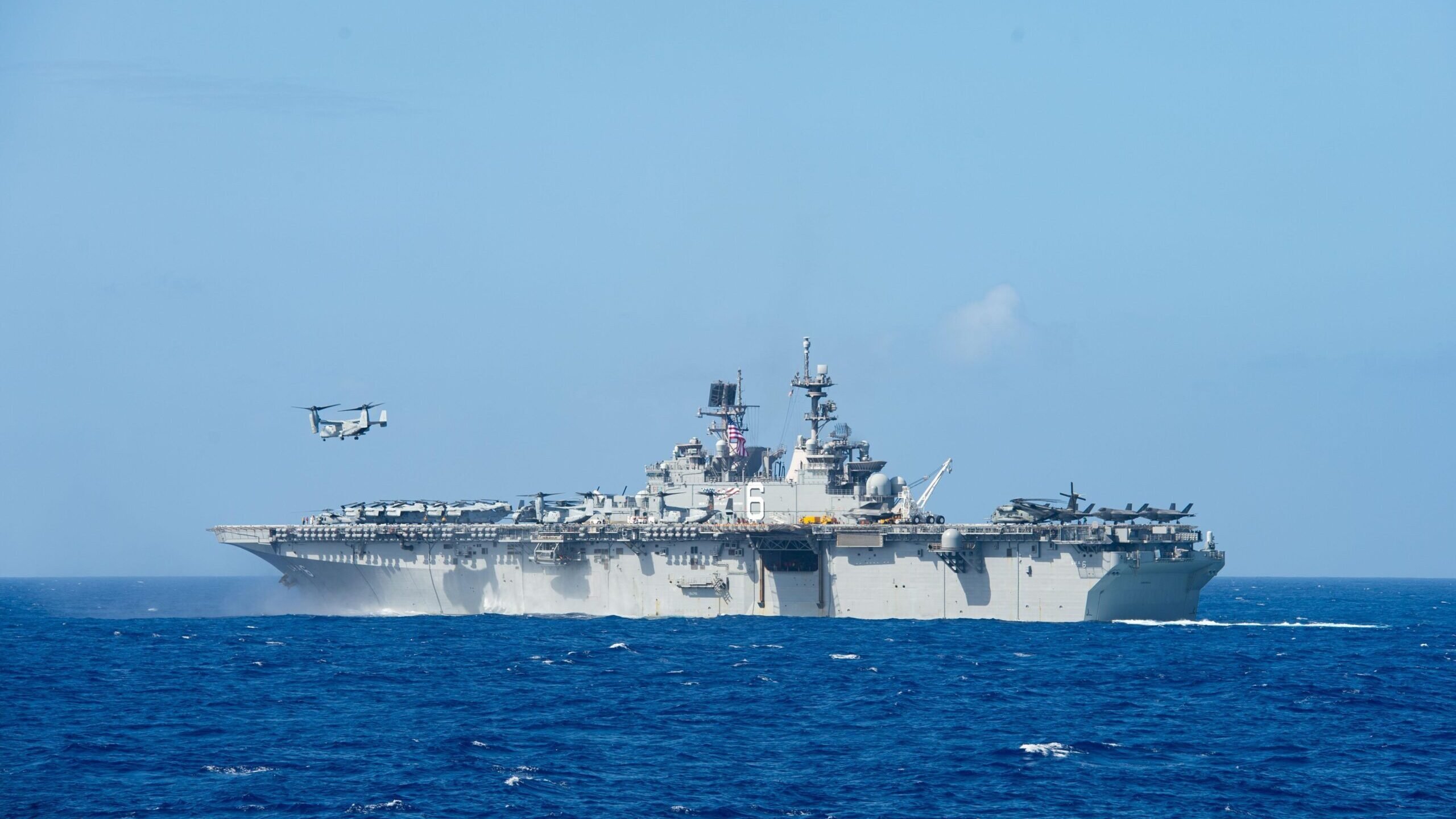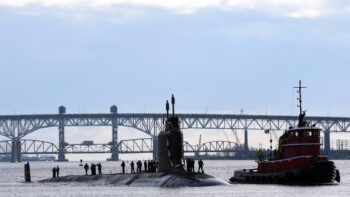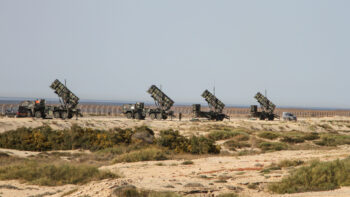
An MV-22B Osprey tiltrotor aircraft, assigned to the “Dragons” of Marine Medium-Tiltrotor Squadron (VMM) 265, 31st Marine Expeditionary Unit, prepares to land on the flight deck of the amphibious assault ship USS America (LHA 6) Feb. 15, 2020. (U.S. Navy photo by Mass Communication Specialist 3rd Class Nicholas V. Huynh)
WASHINGTON — Navy and Marine Corps officials told House lawmakers that a prospective multi-ship buy of three San Antonio-class amphibious transport docks and one America-class amphibious assault ship could net the service around $900 million in savings.
That number came out of a House Armed Services Seapower and Projection Forces subcommittee hearing held yesterday with Navy acquisition executive Nickolas Guertin and Lt. Gen. Karsten Heckl, the Marines’ senior requirements officer.
In response to a question from Rep. Rob Wittman, R-Va., Heckl said the approximate savings for buying the four amphibs — all of which are in the Navy’s long-range shipbuilding plan — in a multi-ship deal would be approximately $914 million.
Both Wittman and Rep. Jared Golden, D-Maine, who also questioned Guertin about amphibious ship procurement, indicated they understood the savings would range between $900 million and $1 billion.
Later during the hearing, Guertin also confirmed during a back-and-forth with Golden that the savings would be roughly $900 million.
A spokesman for Heckl deferred questions about the cost savings estimate to the program office, which is run by Naval Sea Systems Command. A spokeswoman for NAVSEA had not yet responded to questions from Breaking Defense as of press time.
HII’s Ingalls Shipbuilding, based in Pascagoula, Miss., is the Navy’s prime contractor for amphibious ships.
“We look forward to working with Congress and our customers as the budget cycle and multi-ship procurement discussions progress. We are committed to identifying the most efficient and effective way to meet the 31 amphibious warship requirement and look forward to leveraging our established production lines, skilled American shipbuilders and our supplier partners throughout the U.S.,” company spokeswoman Kimberly Aguillard told Breaking Defense in a statement.
Lawmakers like Wittman for years have pushed the Navy to ink a multi-ship buy of amphibious warships and have previously granted the authorities for the Pentagon to do so. One of the key reasons multi-ship purchases save the Defense Department money is that the government gets a better deal when it orders a larger number of supplies in bulk.
It also locks in prices for the work to be done, lest the unexpected happen and disrupt the supply chain and increase the cost of goods — like a global pandemic.
Paul Roden is the chairman of the Amphibious Warship Industrial Base Coalition, an industry association representing companies around the country that collectively make up the amphibious ship supply chain.
“Multi-ship buys are the gold standard to provide predictability and stability for the industrial base. In our most recent AWIBC survey, 70% of suppliers said the most helpful thing the government can do is execute multi-ship and multi-year procurement strategies,” Roden said in a statement to Breaking Defense. “On behalf of over 650 companies across the nation in the amphibious warship industrial base, this multi-ship purchase would allow us to retain our skilled workforce, get ahead of inflation and avoid supply chain disruptions, resulting in efficiencies for cost and delivery time.”
When asked by Golden why the service has hesitated to execute a multi-ship amphib deal, Guertin said, “We’ll use multi-year procurement as often as possible in places where we can show a financial benefit. As the general said, you’re right, it’s about $900 million. All told it happens over the course of multiple years and so we need to package that up and utilize those resources in complete transparency with Congress.”
Updated 4/19/2024 at 1:00 pm ET with comment fromthe Amphibious Warship Industrial Base Coalition.
More than 100 lawmakers call for appropriators to restore Navy’s second Virginia-class sub
The letter is the latest sign lawmakers have rejected the Navy’s argument that the cut was a strategic one due to a construction backlog, though some key signatures are missing.


























